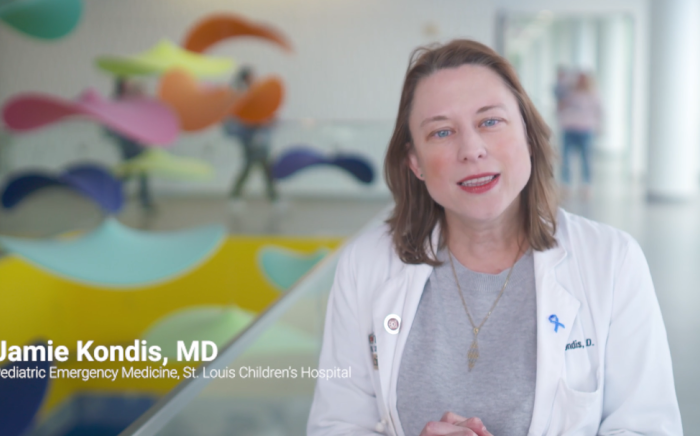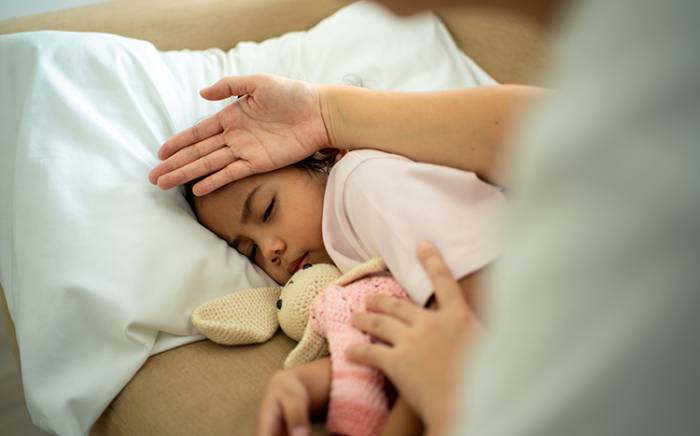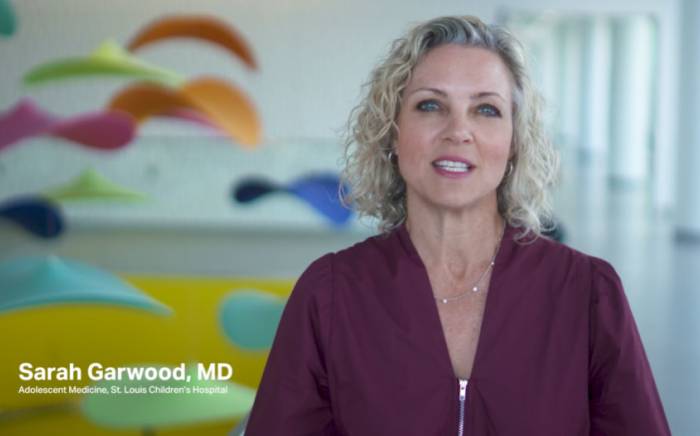What is Hirschsprung disease?
Hirschsprung disease is a serious birth defect where nerve cells are completely missing from the end of the bowel. Normally, the esophagus, stomach, small intestine and colon have about 500 million nerve cells (i.e. neurons) that control almost everything the gut does. These nerves and their supporting glia are called the enteric nervous system (ENS), a system complex enough that it is sometimes referred to as “the second brain”. Important functions of the enteric nervous system include controlled movement of food from the beginning to the end of the bowel. The ENS also controls intestinal blood flow, regulates the cells that line the intestine, and influences intestinal inflammation. To perform these functions, the ENS also needs to “sense” what is happening inside the bowel and within the bowel wall. For this reason, when the ENS is missing from the end of the bowel a variety of serious problem can occur.
Most children with Hirschsprung disease (i.e., about 80 percent) are missing enteric neurons from just a few inches at the end of the colon. Some children with Hirschsprung disease, however, are missing enteric neurons from the entire colon, or the entire colon and part of the small bowel. The region of the bowel missing enteric neurons tends to stay contracted and does not let stool or air pass through easily causing partial functional obstruction. Food then gets trapped in regions of the bowel closer to the mouth that contain enteric neurons. This leads to many different symptoms.
What are the symptoms of Hirschsprung disease?
Hirschsprung disease symptoms vary dramatically from person to person. This variability is not dependent on the length of bowel that is missing enteric neurons, and is a subject for ongoing research. About 65 percent of children with Hirschsprung disease are diagnosed by age 6 months, but it is not uncommon for a diagnosis in older children or even occasionally in adults.
There are several “classic” symptoms that may suggest a diagnosis of Hirschsprung disease.
1. Neonatal bowel obstruction: Children may be ill within 24 hours of birth or may not appear ill until several weeks after birth. Often they have a very distended abdomen, do not tolerate feeding, and have repeated vomiting that is often yellow or green (i.e., bilious) in color. They often have fever, appear lethargic and may become dehydrated. This is a life-threatening medical problem for which immediate care is needed.
About 75 percent of children with Hirschsprung disease have symptoms of abdominal distension, and about 25 percent have bilious vomiting.
2. Neonatal bowel perforation: This occurs in about 5 percent of children with Hirschsprung disease and accounts for about 10 percent of all newborn bowel perforations. Symptoms include abdominal distension, poor feeding, vomiting, lethargy, and either a lack of bowel movements or diarrhea. This is also a life-threatening medical problem. Most bowel perforations in Hirschsprung disease occur by 2 months of age, and about 50 percent of these children have nerve cells missing from at least half of the colon.
3. Delayed passage of meconium: Meconium is the first bowel movement passed by an infant. Most healthy full term infants pass meconium within the first 24-48 hours after birth, whereas 50 percent of children with Hirschsprung disease do not pass meconium until they are at least 48 hours old. Children who do not pass meconium for more than 48 hours after birth are at moderate risk for having Hirschsprung disease (approximately 5 – 20 percent) and should be evaluated by a health care professional for this disorder. Note: premature infants often have delayed passage of meconium so this symptom is not worrisome in premature infants. Also, stretching the rectum with a suppository, thermometer or by digital rectal exam will cause infants to pass stool even if they have Hirschsprung disease.
4. Neonatal bloody diarrhea: Children with Hirschsprung disease are at high risk for a type of bowel inflammation called “Hirschsprung disease associated enterocolitis.” This life-threatening medical problem causes diarrhea that is often bloody and accompanied by abdominal distension and fever. Since infectious diarrhea is less common in newborns who are breastfeeding or formula feeding than in older children who eat a wider variety of foods, newborn bloody diarrhea should raise suspicion for Hirschsprung disease.
5. “Severe” chronic constipation: Constipation is >1000 times more common than Hirschsprung disease and occurs in about 25 percent of healthy children. For this reason, most children with constipation do not need to be evaluated for Hirschsprung disease. Symptoms that should raise concern include constipation that does not respond to oral medicine, especially if problems begin within the first few months of life, and constipation with associated vomiting, abdominal distension or poor growth. Because there is a broad range of “normal” bowel movement frequency and consistency in healthy infants and children, you will need to work with your pediatrician or a pediatric gastroenterologist to know if your child’s bowel pattern is concerning.
6. Enterocolitis: Children with Hirschsprung disease may have episodes of enterocolitis at any time, even after surgical treatment (see below). Typical symptoms include “explosive diarrhea” that may be foul smelling or bloody. Typically, children with this disease also have abdominal distension, fever, lethargy and a dramatic release of gas and stool after digital rectal exam. This is a life–threatening medical problem that should be treated promptly.
What causes Hirschsprung’s disease?
The enteric nervous system (ENS) arises from precursor cells that colonize the entire bowel during the first trimester of pregnancy when most organs of the baby form. If the end of the bowel is not colonized by these migrating precursor cells, the child will be born with Hirschsprung disease. The precursor cells that colonize the bowel also need to turn into enteric neurons and supporting cells called glia, and these cells need to mature to form an interacting network of nerve cells for the bowel to work properly.
How does this occur? Cells are complex “machines” that can move, change shape, and at some stages of development change their function to perform specific tasks. Each baby (or adult) has many different types of cells including nerve cells, muscle cells, and gut lining “epithelial” cells, to name just a few of the varieties. The instructions to make a cell or to make a baby are encoded in our DNA. In every human cell there are 46 chromosomes (22 paired chromosomes and either two X (for females) or an X and Y chromosome (for males)). These chromosomes contain approximately 6 billion bases (A, G, C, or T), and the order of these bases contains the information needed for life. A major role for the DNA is to tell the cell how to make specific proteins and how much of each protein to make. The average cell has about 25,000 different proteins that can be thought of as pieces in a very complex machine. When the instructions for making these proteins are incorrect, then cells do not function properly.
Defects in the instructions encoded in the DNA underlie most cases of Hirschsprung disease. This means that Hirschsprung disease is a genetic disease. There is a lot known about the genetics of Hirschsprung disease and a lot more to learn. It is also possible that some environmental factors related to a mother’s health, nutrition or medicine use might influence the risk that a child will be born with Hirschsprung disease, but we currently believe that in most cases this will only occur if there is an underlying genetic defect that predisposes to the disease.
There is ongoing research at St. Louis Children’s Hospital and Washington University School of Medicine to understand the genetic and non-genetic factors that predispose children to Hirschsprung disease.
How often does Hirschsprung's disease occur?
Hirschsprung's disease occurs in 1 out of every 5,000 live births.
Can Hirschsprung disease risk be predicted?
The genetic risk factors that cause Hirschsprung disease are too complicated for prenatal DNA testing or DNA testing after birth to accurately predict if a child will be born with Hirschsprung disease or to use DNA testing for diagnosis. The risk of having a baby with Hirschsprung disease is, however, much higher if a parent or sibling has this disease. For example, if one child in the family already has Hirschsprung disease the risk of having another affected child ranges from 1 – 33 percent depending on the sex of the children and the extent of affected bowel in the first child.
Do children with Hirschsprung disease have other medical problems?
Most children with Hirschsprung disease (70 percent) are not born with other medical problems, but 30 percent have other birth defects. For example, there are genetic causes of Hirschsprung disease associated kidney or urinary tract defects (25 percent), Down syndrome (5 – 10 percent), congenital deafness (9 percent), and congenital heart defects (8 percent), seizures and mental retardation (6 percent), night time breathing problems (apnea) (1 percent), and cancer (1 percent). The risk of Hirschsprung disease is therefore higher in children with other birth defects. For example, 1 percent of children with Down syndrome also have Hirschsprung disease.
How is Hirschsprung disease diagnosed?
A physician will examine your child and obtain a medical history. Other tests may be done to evaluate whether your child has Hirschsprung disease. These tests may include:
- Rectal biopsy: This is the only definitive test for Hirschsprung disease. For this test, a very small piece (1-2 mm) of the rectal lining is obtained using a small instrument passed through the anal opening. Sometimes a full thickness rectal biopsy under anesthesia is recommended, but at other times a rectal suction biopsy without anesthesia is appropriate. There is no sensation for cutting inside the colon so pain relieving medicines are not needed for the biopsy.
- Abdominal X-ray: An X-ray of the child’s abdomen allows physicians to determine if there is a lack of stool at the end of the large intestine near the anus and dilated segments of the large and small intestine. This test may aid in confirming a diagnosis of Hirschsprung disease.
- Barium enema: For this test, a fluid called barium (a chalky liquid used to coat the inside of the bowel so that they will show up on an X-ray) is given into the rectum as an enema. An abdominal X-ray of children with Hirschsprung disease should show that the end of the bowel is narrower than areas of the bowel close to the mouth. This test may also show other problems including strictures (narrow areas). Barium enema may appear normal in about 10 percent of children with Hirschsprung disease and is less reliable in infants than in older children.
- Anorectal manometry: This test measures nerve reflexes which are missing in Hirschsprung disease.
What is the treatment for Hirschsprung's disease?
Children with Hirschsprung disease always need surgery since the likelihood of long term survival without surgery is low. There are a variety of surgical approaches to treat Hirschsprung disease. The surgical approach is based on the individualized needs of each child and their condition. Common surgical approaches include:
Pull through surgery: For this operation, the end of the bowel that does not have nerve cells is completely or almost completely removed, and bowel that does contain nerve cells is attached to the anal opening. After surgery, stool comes from the normal anal opening. In some cases the pull through surgery can be done in a single operation, but if the child is very ill or the bowel is very dilated, it is more common to create a temporary ostomy.
Ostomy: This is a connection between the inside of the bowel and the skin on the abdomen. Colostomy means the connection is to the colon, whereas an ileostomy is a connection between the end of the small bowel and the skin. A small plastic bag is attached to the opening to collect stool.
In most cases, the ostomy is a temporary measure to let the child grow, let bowel inflammation resolve, or let the bowel shrink back down to normal size before a pull through surgery. As long as the ostomy allows stool to bypass the region of the bowel without nerve cells, children typically function well with an ostomy.
Will my child have problems in the future?
Surgery dramatically improves the health of children with Hirschsprung disease, but some problems can occur even after recovery from surgery. These problems include:
1. Enterocolitis (see above): Surgery reduces, but does not eliminate the risk of enterocolitis. About 35 percent of children have at least one episode of enterocolitis after surgery and some children have recurrent or prolonged episodes of enterocolitis. This is usually treated with a special antibiotic called Flagyl (Metronidazole) and with rectal irrigation.
2. Tightness of the anal sphincter: It is not uncommon to need to do some rectal dilation after surgery. Your surgeon can teach you how to do this at home and is usually needed temporarily.
3. Problems with toilet training: It is common for children with Hirschsprung disease to take longer than normal for toilet training, but most children eventually do very well.
4. Nutritional problems: This is usually only an issue for the small percentage of children who have Hirschsprung disease affecting the colon and small bowel since most nutrients are absorbed in the small bowel. The main job of the colon is to help reabsorb water from stool back into the blood stream. Children and adults can live very well without their entire colon, but will be more susceptible to diarrhea and need more salt in their diet if the whole colon is removed. Eighty percent of children with Hirschsprung disease only have a short segment of colon without nerve cells removed and this does not affect nutrition at all.
For more information or to schedule an appointment, call 314.454.5437 or 800.678.5437 or email us.










